The transistor configuration found in the schematic below can be used as the input to an op-amp that can work with a common mode input at or above the high supply rail. For example this configuration appears in the design of Analog Devices' LT6015 "over the top" op-amp IC. Does this transistor topology have a name?

simulate this circuit – Schematic created using CircuitLab
The circuit consists of two current mirrors: Q1 and Q3 and Q2 and Q4. Assuming the current mirrors reflect current 1:1, and neglecting the base currents which are small in comparison to the collector currents flowing in Q1 and Q2, the sum of the output currents is equal to the reference current. If the majority of the reference current gets divided equally between the collectors of Q1 and Q2, then the output currents will be equal. However, a difference in the input voltages will cause the reference current to be divided unequally between the current mirrors, and will result in unequal output currents.
For reference, here is a stylized schematic from the LT6015 datasheet.
